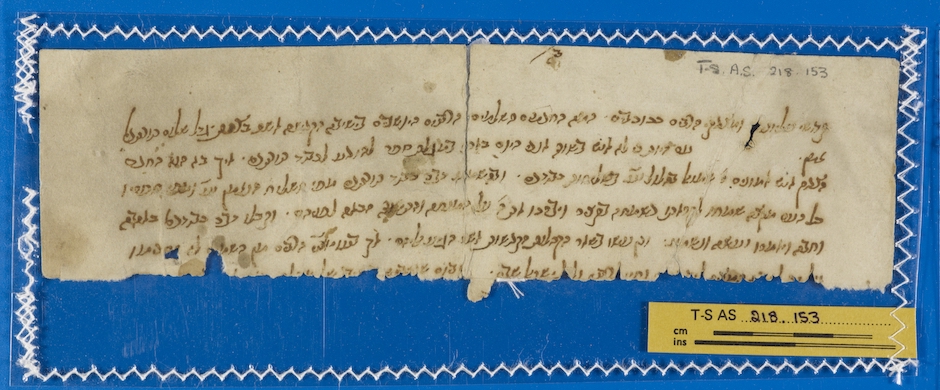Throwback Thursday: Egyptian Help to the Holy Land

Our Throwback Thursday this week is taken from issue 23 of the printed edition of Genizah Fragments, published in April 1992, by Abraham David:
During the Mamlūk period (1250-1516), the land of Israel was politically and economically attached to the Egyptian centre and was ruled from Cairo by emirs and governors with varying degrees of authority.
From the second half of the fifteenth century, Jewish sources paint an interesting picture of relations between the Jews of the two countries. Among such sources are memoirs of migrants and pilgrims from Europe to the land of Israel via Egypt, passages from responsa literature, and letters and documents found in the Cairo Genizah.
As part of the Oriens Judaicus project of the Ben-Zvi Institute in Jerusalem, I have recently researched twelve such manuscripts from the Genizah Collections at Cambridge University Library that touch on the history of Jerusalem, Hebron and Safed in the early sixteenth century.
The evidence goes further than demonstrating the massive and apparently continuous support that the Jews of Egypt provided for their brethren in the Holy Land. It also emerges that, although the links between the Jews of Safed and Damascus became reinforced with the rise of Ottoman rule in the land of Israel from 1516, the connection between the Jews of that city and Egypt did not cease, but was reflected in commercial ties and in requests for financial aid.
Jerusalem: R. Samuel ha-Kohen, a member of one of the academies in Jerusalem, asked a number of communal leaders in Egypt for permission to use a synagogal sermon to explain his financial difficulties (T-S 13J24.29).
Later in the sixteenth century, an anonymous philanthropist in Egypt received a letter from R. David Badussi, who used to teach children in Jerusalem. R. David details his economic plight and asks for help (T-S 13J9.16a).
During the same period, R. Jacob Zalmati and his brother R. Yeshu‘ah in Egypt were contacted by their Jerusalem sister Gamilah, the widow of the Moroccan kabbalist, R. Judah Haleywah, who had lived in Safed and Jerusalem. She asked them to intercede on her behalf with a philanthropist who is unnamed but is probably to be identified as R. Solomon Alashkar, a known supporter of charities in the contemporary land of Israel. She explains that she is still waiting for him to fulfil a promise to send her money (Or.1080 J161).
Hebron: Two fundraising letters, signed by the heads of the Hebron community at some point in either the sixteenth or seventeenth century, were delivered by emissaries to dignitaries in Egypt (T-S 8J11.20 and T-S 18J3.23).
Safed: The first six lines have been preserved of a letter sent from Egypt to the members of the “holy academy” in Safed about the death of their emissary, R. Samuel Bahalul. Other Genizah evidence places such a personality in the first decade of the sixteenth century and we may therefore conclude that the Safed community was at that time suffering the kind of economic difficulties that necessitated appeals to the Diaspora for financial assistance (T-S AS 218.153).
At the end of the century, R. Abraham Sagis of Safed sent a letter to an anonymous person with good connections in Egypt who had studied in Safed with the prominent sage, R. Moses di Trani. The writer complains bitterly about the addressee’s failure to pay a debt owed to him and his unwillingness to support the descendants of his late master. He also describes the poverty being experienced in Safed at that time (T-S 10J17.33).
I have published full details of these fragments, and of others from Oxford and New York, in Cathedra 59 (1991), pages 19-55.

Add new comment